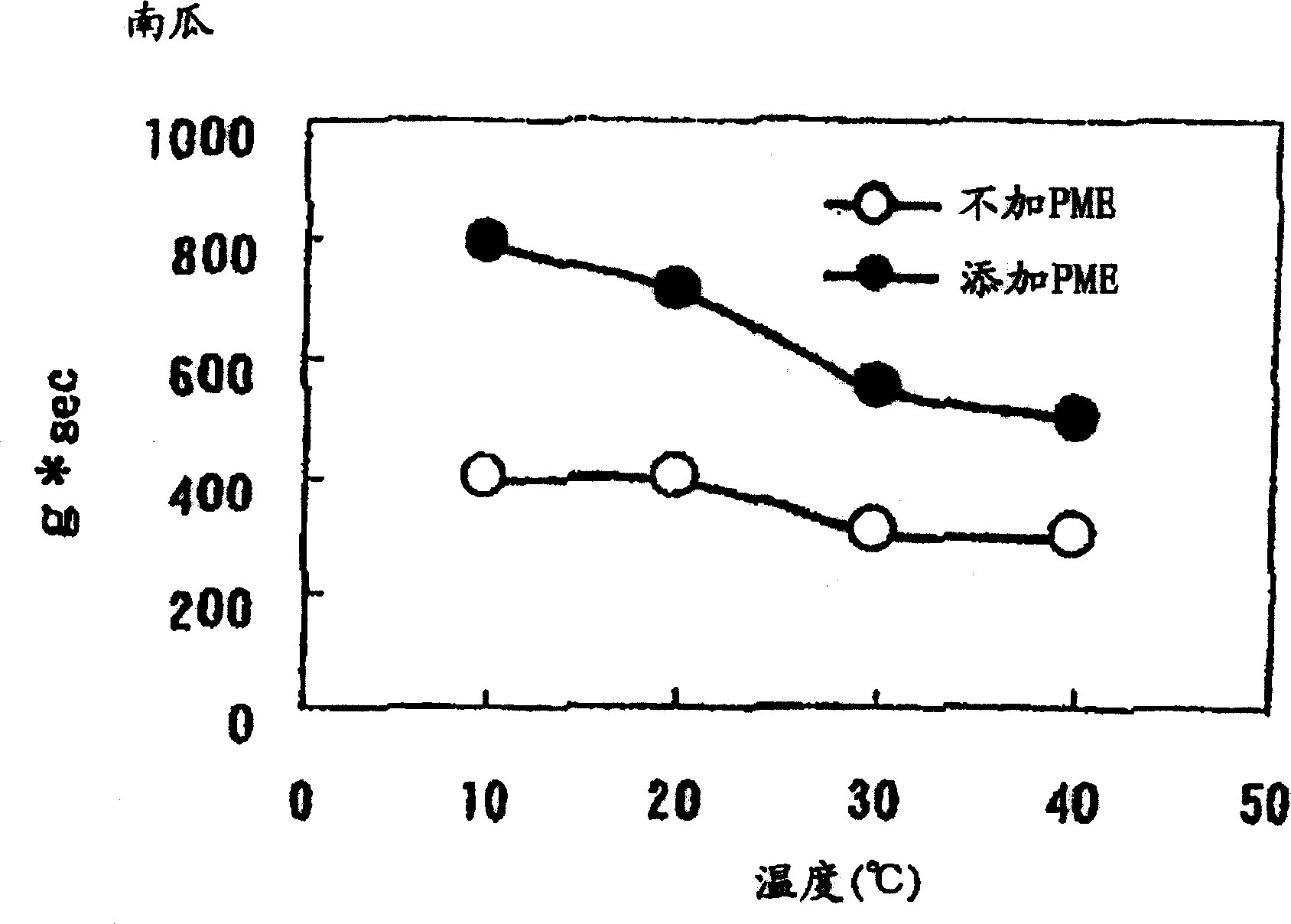Pumpkin for cooking use and process for producing the same
A technology of pumpkin and pumpkin slices, which is applied in the field of pumpkin for cooking and its production, can solve the problems of abnormal bitterness of vegetables, insufficient softening effect and the like
- Summary
- Abstract
- Description
- Claims
- Application Information
AI Technical Summary
Problems solved by technology
Method used
Image
Examples
Embodiment 1
[0043] Mix pectin esterase (NovoShape) with 0.28% by weight calcium chloride aqueous solution (relative to 2 times the weight of vegetables) adjusted to 10°C-40°C in an amount of 20P.E.U per 100g of vegetables. Slice the squash, potatoes and carrots into 1.5cm cube shapes and add to the solution. The solution was vacuum treated at 10°C, 20°C, 30°C and 40°C and 50 mmHg for 20 minutes, respectively. After the vacuum treatment, the vegetables were left to stand at 10°C, 20°C, 30°C and 40°C for 1 hour, respectively. The vegetables were taken out and then boiled in a cooking pot for 15 minutes to prepare samples for measuring physical properties.
[0044] For comparison, samples were prepared by similarly treating vegetables with a 0.28% by weight aqueous solution of calcium chloride without pectinesterase. Physical properties were measured by load measurement through penetration of a 5 mm spherical plug with a texture analyzer (manufactured by Stable MicroSystems Ltd.). see res...
Embodiment 2
[0049] Pectin esterase (NovoShape) was mixed with 0.28% by weight calcium chloride aqueous solution (relative to 2 times the weight of vegetables) adjusted to 10° C. in an amount of 20 P.E.U per 100 g of vegetables. The pumpkin was cut into 1.5cm cube-shaped slices, then added to the solution for soaking and kept at 10°C for 24 hours. The squash slices are then removed from the solution and boiled in a steamer for 15 minutes. Slices of pumpkin that were not treated with pectinesterase were assigned a score of 0. The pumpkin slices were scored on a scale of -3 (the pumpkin slices lost their shape due to boiling) to +3 (the pumpkin slices did not lose their shape due to boiling) by a 9-person panel. That is, the panel assigned scores based on whether they believed the pectinesterase-treated pumpkin pieces had lost their shape due to boiling.
[0050] The result was that the pectin esterase treated pumpkin slices had a score of 2.7, close to the highest possible value, and 6 ou...
PUM
 Login to View More
Login to View More Abstract
Description
Claims
Application Information
 Login to View More
Login to View More - R&D
- Intellectual Property
- Life Sciences
- Materials
- Tech Scout
- Unparalleled Data Quality
- Higher Quality Content
- 60% Fewer Hallucinations
Browse by: Latest US Patents, China's latest patents, Technical Efficacy Thesaurus, Application Domain, Technology Topic, Popular Technical Reports.
© 2025 PatSnap. All rights reserved.Legal|Privacy policy|Modern Slavery Act Transparency Statement|Sitemap|About US| Contact US: help@patsnap.com



